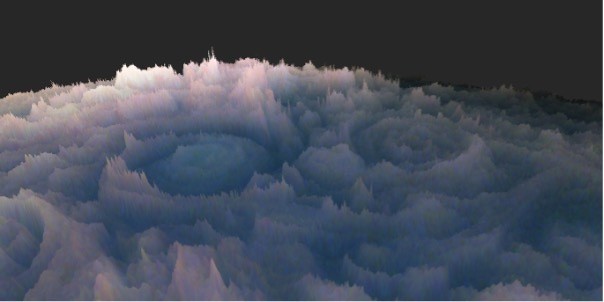It's getting frosty in Jupiter!
A new video animation of the gas giant's frosted-cupcake-appearing clouds offers an excellent glimpse at the massive planet's atmosphere as NASA's Juno probe conducts a close-up flyby of Jupiter's satellite Europa next week to infiltrate the moon's frozen crust with its microwave radiometer (MWR), as reported first by Space.com.

Dr. Gerald Eichstädt, a citizen scientist, mathematician, and software developer, gave us a fascinating look into the delicate wisps, curls, and swirls that looks like a candy dreamland.
However, these clouds may look tasty and appealing but do not be fooled, for they are extremely toxic.
According to theoretical models, the clouds should be made up from top to bottom of various chemical species, including ammonia, ammonium hydrosulphide, and water ice, Dr. Eichstädt said in a statement.
He added that they would test and refine the theoretical predictions and produce a clearer 3D image of the chemical composition once they calibrated their data of the cloud tops.
This 30-second animated video was produced using NASA's Juno spacecraft's sensitive visible-light camera JunoCam.
Read also : Astrophotographer Captures a 'Ridiculously Detailed' Image of Jupiter Made of 600,000 Shots!
Jupiter's 43rd Flyby
The probe was initially launched on August 5, 2011, and on July 4, 2016, it reached Jupiter. JunoCam was added to Juno to increase interest in the project among the general public and to make it simple for astronomers to access the photographs taken during planetary flybys.
The camera's data on visible light intensity was gathered, and this data was used as the basis for building an incredible 3D elevation landscape.

The data on visible light intensity can be mapped as a 3D elevation landscape. This picture was taken by NASA's Juno probe during one of its 43 close flybys with Jupiter. It is a still from an animation that shows a flight over a comparable landscape by processing and applying a red filter to the imaging data.
Dr. Eichstädt's animated video depicts a pass made during Jupiter's 43rd flyby at an altitude of 8,410 miles (13,536 kilometers) above the planet's swirling cloud tops.
The team has successfully determined the elevation of the observed cloud-tops by utilizing the various ways that sunlight is reflected and scattered by clouds.
"The Juno mission provides us with an opportunity to observe Jupiter in a way which is essentially inaccessible by Earth-based telescopic observations. We can look at the same cloud features from very different angles within only a few minutes."
Related Article : NASA Juno Reveals Jupiter's True Colors In New Stunning Images
This article is owned by Tech Times
Written by Joaquin Victor Tacla
ⓒ 2025 TECHTIMES.com All rights reserved. Do not reproduce without permission.




